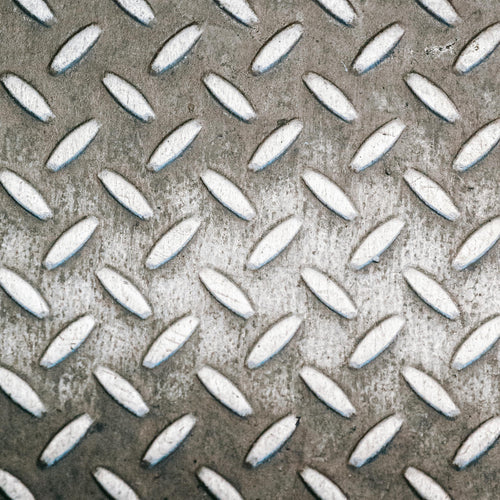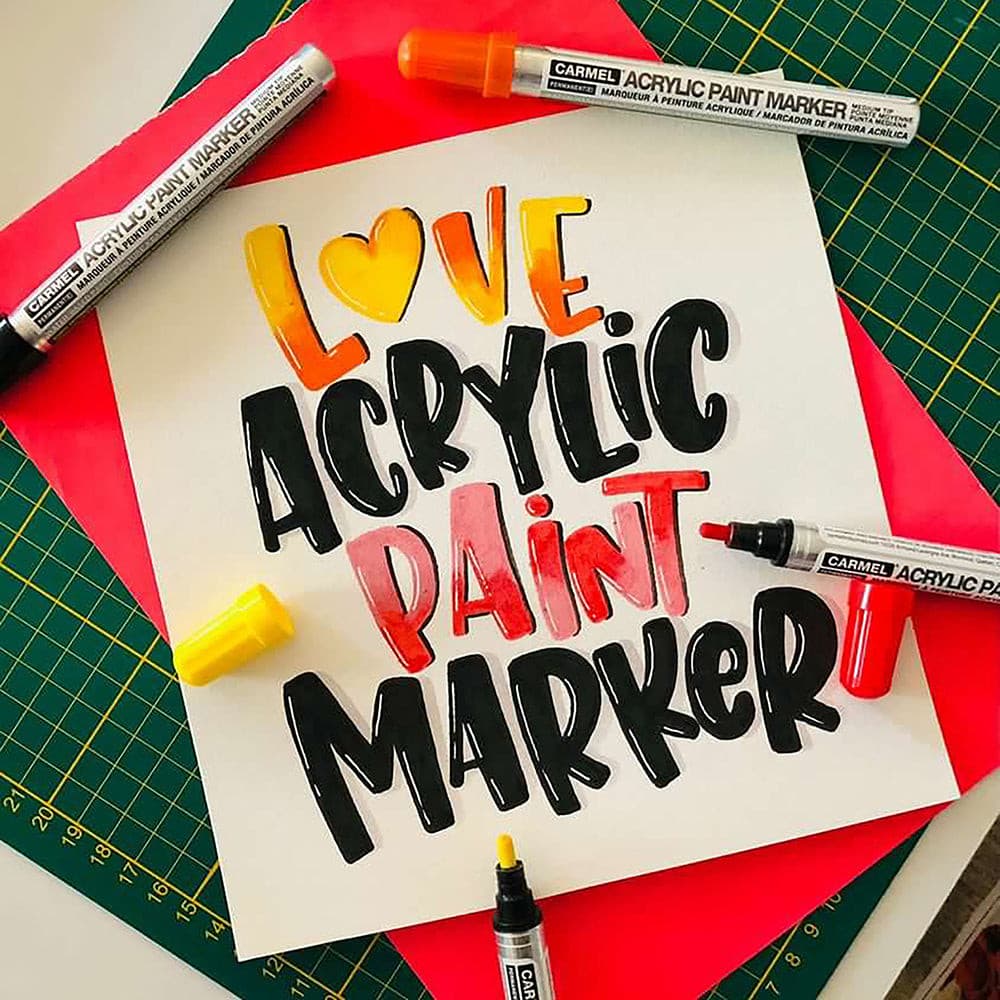If you’re looking to make bold, vivid lines of color on a variety of smooth surfaces, but also need your markings to be easily removable, Carmel’s line of liquid chalk markers are the way to go.
Designed to be removed with a damp cloth from smooth, non-porous surfaces, liquid chalk markers are ideal for situations where markings need to be consistently removed and reapplied.
That makes them perfect for things like restaurant menu boards – which is why they are sometimes referred to as bistro chalk markers.
What Are Liquid Chalk Markers?

A Water-Based Paint Marker
Liquid chalk markers are specially formulated water-based paint markers that create removable markings. They don’t actually contain chalk – the name refers to their use on vinyl chalkboards and menu boards.
Liquid chalk markers apply paint that is VOC and solvent free. They are great for indoor use, but can also be used to write on surfaces that will stay outdoors, such as glass shop windows or notice boards.
Liquid chalk markings can be easily wiped away from these non-porous surfaces with a damp cloth, much like chalk can be wiped from a blackboard, but their composition is totally different. Unlike standard coloured chalk, liquid chalk markers create sharp, vivid lines of colour with much less potential for mess. There’s no powder to get on your hands, and markings are clear and long-lasting – until they are wiped away.
How To Use Liquid Chalk Markers:
Liquid Chalk Markers Have Grown In Popularity Over The Past Few Years. You Can See Their Markings Everywhere, From Restaurants To Grocery Stores To All Kinds Of Arts And Crafts.
Even Though They Are Relatively Straightforward And Easy To Use, It’s Always A Good Idea To Learn How To Properly Use These Specialized Marking Tools.
When It Comes To Using Liquid Chalk Markers, It’s Easy To Remember This Rule Of Thumb: Just Shake, Pump And Draw.
1. Shake The Marker
Before use, it’s always a good idea to shake the marker a bit. Make sure to do this while the cap is still on.
2. Prime The Nib (Pump)
Like all valve activated markers, liquid chalk markers work by allowing paint to flow onto the nib (or tip), which is then applied to the surface as you write or draw. To make paint flow onto the nib, simply grasp the marker and push the nib down on a hard surface. You’ll feel it sink into the marker’s tube a bit, which will open a valve and allow paint to seep into the nib.
Push the marker up and down a few times to release the paint – you can give it up to 20 pumps each time you want to prime the nib.
It’s best to do this on a surface other than the one you’re writing on, so that you don’t mark your surface by accident. Try and hold the marker as upright as possible (at a right angle to the surface) so as to avoid drips or smudges.
Tip: Don’t apply too much pressure to the nib when pumping the markers. It can cause the nib to deform.
 Tip: Always do a spot test before using the markers on the surface. This will allow you to see if the surface is compatible with your liquid chalk markers
Tip: Always do a spot test before using the markers on the surface. This will allow you to see if the surface is compatible with your liquid chalk markers
Best Surfaces For Liquid Chalk Markers
Carmel liquid chalk markers are designed to be used on smooth, non porous surfaces. Their markings are removable from these surfaces by wiping with a damp cloth. If used on porous surfaces, their markings can’t be removed easily. It’s not recommended to use liquid chalk markers on rough surfaces, as you could damage the nib.
Ideal surfaces include:
- Vinyl blackboards (“fake” blackboards only – note that liquid chalk markers are not ideal for “real” slate chalkboards)
- Whiteboards
- Glass, sealed ceramic tiles, laminated surfaces
- Metal, including galvanised metal
- Mirrors
To remove liquid chalk markings from these types of surfaces, simply wipe them over with a damp cloth. You can also use a household cleaner to wipe them away.
Making Markings Permanent
Of course, you might want your markings to be permanent! If you do, follow these simple tips:
- Paper/Card: No action needed – liquid pigment will be absorbed into the fibres, making
it permanent. - Terracotta: Bake in the oven at 220°C for 45 minutes, then spray with clear varnish.
- Textiles: Iron on the reverse side.
- Porcelain: Bake in an oven at 160°C for 45 minutes, optionally spray with clear varnish.
- Metal: Spray with clear varnish.
- Glass: Bake in an oven at 160°C for 45 minutes, then spray with clear varnish.
- Wood: Spray with clear varnish.
- Plastic: Spray with clear varnish.
 With proper use, care and storage, you’ll be able to consistently create bold, vivid markings on your surfaces using liquid chalk markers. Since they are removable from non-porous surfaces with a damp cloth, you’ll be able to quickly adjust your markings for day-to-day use, both indoors and outdoors.
With proper use, care and storage, you’ll be able to consistently create bold, vivid markings on your surfaces using liquid chalk markers. Since they are removable from non-porous surfaces with a damp cloth, you’ll be able to quickly adjust your markings for day-to-day use, both indoors and outdoors.
Liquid Chalk Marker Maintenance And Storage
Here are a few tips to help you get the most out of your liquid chalk markers. Keep nibs and tops of pens clean. Wipe with a clean tissue after use. Store pens on their side or upright with the cap to the top. Always ensure the cap is on tight. Always use a clean and damp cloth when erasing markings or a dry cloth with glass cleaner sprayed on the surface. After wiping with a damp cloth, if subtle remnants of markings are still visible on some surfaces like glass, use a little household cleaner to remove them. Marker nibs can become ragged when used on rough surfaces. The felt nibs can be removed and reversed. If the nibs become clogged they can be removed and washed in clean water, dried and replaced.


















